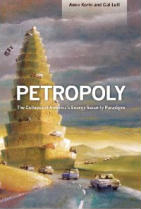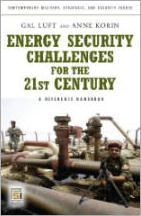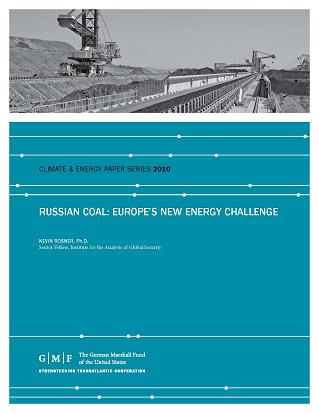The Caspian Sea is the largest landlocked body of salt water in the world. It is surrounded by five states: Russia in the north; Iran in the south; Azerbaijan in the west, and Kazakhstan and Turkmenistan in the east. The region has long attracted the attention of the international community due to its rich hydrocarbon resources as well as due to its strategic location at the crossroads of Asia, Europe, and the Middle East. How the Caspian seabed is divided among the sea’s littoral states will determine which hydrocarbon fields will fall into whose sector; this question will contribute to the geopolitical character of the region for years to come.
Background
Before the breakup of the Soviet Union in 1991, the legal framework of the Caspian was ruled by Soviet-Iranian treaties. With the dissolution of the Soviet Union the number of Caspian-littoral states has increased from two to five, leaving a legislative black hole in its governance and delineation. Still-unresolved disputes arising from the sea’s inadequate legal status and regime, overlapping ownership claims and a preference for unilateral or bilateral approaches pose serious obstacles to the exploitation of several offshore oil and gas deposits, and block many projects—including trans-Caspian oil and gas pipelines.
Until and unless the multidimensional aspects of a legal framework on a practical basis are resolved, and a stable regime for governance is established, controversies and conflicts will continue. All littoral states agree that a multilateral treaty is the ideal way to resolve their disputes and to establish firm long term energy development and security in the region. These states fail to agree, however, on how such a treaty should be formulated.
From Past Treaties and Agreements to Current Realities
The Russian Empire and Persian land boundary on the Caspian’s western frontier was delineated by the Gulustan Treaty in 1813 and the Turkmenchay Treaty in 1828 following two wars between the countries. The latter prohibited Persia to keep military vessels and naval forces in the Sea but gave a right for its merchant vessels to navigate freely. None of these treaties provided for any demarcation for the Caspian Sea.
The main treaty governing the legal regime or activities in the Caspian Sea is the Treaty of Friendship signed by the RSFSR and Persia in 1921. By setting the principle of equality between the two countries, this treaty gave Iran the right to keep a navy, to navigate and to fish freely in the Caspian. The parties also agreed that they should equally share the responsibility for the sea’s security and that under no pretense should any foreign presence be allowed in the Caspian.
The Treaty of Establishment, Commerce and Navigation in 1935 gave the USSR and Iran the right to fish in coastal waters up to a limit of 10 nautical miles. Moreover, an exchange of letters accompanying the treaty defined the Caspian sea “as a Soviet and Iranian sea”. The Treaty on Commerce and Navigation in 1940 reiterated the freedom of navigation and fishing rights of the 1935 Treaty. It stressed that only ships belonging to one of the two littoral states had the right to navigate the Caspian. The commercial ships of one party would be treated in the ports of the other party with the same equanimity as national ships. Foreign country nationals were not even allowed to be crew members on board these ships or to be employed as port personnel in either states’ ports. Both states were given the freedom to fish in all parts of the sea with the exception of the 10 nautical mile limitation agreed on earlier. Beyond this singular limitation, the parties considered the sea as condominium (common use and management). A further exchange of notes annexed to the 1940 treaty defined the Caspian again as exclusively Soviet and Iranian.
The entire Iran-USSR land boundary on both sides of the Caspian sea was delineated by agreements concluded in the mid 1950s. This 1954 agreement defined an administrative border (the so-called Astara-Hasankuli line, connecting the Astara village in Azerbaijan with the Hasankuli village in Turkmenistan) on the western and eastern sides of the Caspian but did not demarcate the Sea. The aviation agreement concluded between USSR and Iran in 1964 upheld this imaginary line for determining flight paths across the region.
In the early 1970s, the USSR Ministry for Oil and Gas Industry divided the north of the Astara-Hasankuli line into four regional sectors (Russia, Azerbaijan, Kazakhstan and Turkmenistan) utilizing the median line principle, which extends an equal distance from the states’ coasts to the centre of the sea until the boundaries met. This administrative division granted the right to the republics to develop hydrocarbon resources in their own sectors but did not give any proprietary rights, since, according to the Soviet constitution, exclusive ownership of all natural resources in the Soviet republics belonged to the Union.
With the 1991 dissolution of the USSR, accompanied by the independence of Azerbaijan, Kazakhstan and Turkmenistan, the number of Caspian littoral states rose from two to five, and with this the geopolitics of the region changed dramatically. The newly independent states initially respected the Soviet administrative division as de facto international boundaries, but at the same time they challenged the already inadequate treaties of the past. In fact, with the Minsk Declaration and the Alma-Ata Declaration, both in 1991, the newly independent states committed themselves to recognize in principle the validity and fulfillment of all treaties and agreements signed by the former USSR. They also signed a Memorandum on Mutual Understanding on the Issue of Legal Succession in Relation to Treaties of the Former USSR in 1992. Nevertheless, debate on the degree of applicability of these agreements to the Caspian continues.
In order to establish a convention that would definitively settle the legal framework of the sea, the littoral states organized a series of summits and working groups. In 1992 their officials met for the first time to open negotiations for a possible multilateral agreement on the sea’s demarcation. Endless negotiations over nearly two decades have revealed a great divergence of views (from the establishment of a condominium to its strict division). Failed consensus due to diverse motives and interests paved the way for unilateral claims and actions, shifting alliances, and consequent disputes.
Turkmenistan passed a 1993 law unilaterally declaring its jurisdiction over a 12-mile coastal zone on the Caspian in accordance with the rules of the UN Convention on the Law of the Sea of 1982 (UNCLOS). Later, Azerbaijan described a part of the sea as national territory in its constitution. It began issuing licenses in 1994 for exploration and development of hydrocarbons at sites within its proclaimed sector. These unilateral actions were protested by Russia by means of diplomatic notes, which were not replied to neither by Azerbaijan nor by Turkmenistan.
The first bilateral agreement on sectoral division of the Caspian was signed by Azerbaijan and Kazakhstan in 1996. They declared that delineation of the sea is fully consistent with the principles of international law and will be kept until a broader multilateral convention is signed. With a similar joint statement, in 1997 Turkmenistan and Kazakhstan declared that they delineated territorial borders along a line running through the middle of the Sea. That same year, Turkmenistan began issuing licenses for offshore drilling rights in its 12-mile zone. Russia signed bilateral agreements with Kazakhstan in 1998 and with Azerbaijan in 2001 to delineate their sectors via an adjusted median line.
The first Summit of Caspian Sea Heads of State, held in 2002, failed to achieve anything significant on the demarcation, legal status and legal regime of the sea and ended without any final declaration. This was followed by a 2003 Russian-Kazakh-Azerbaijani tripartite agreement on the division of the northern 64% of the Caspian seabed into national sectors based on the length of their respective coastlines, which gave an 18% share to Azerbaijan, 19% to Russia and 27% to Kazakhstan. Russia made sure in its bilateral and tripartite agreements that the Caspian seabed and subsoil are divided into national sectors along a modified median line principle, while the Sea’s waters are left open to shared use for maritime commerce and fishing.
In contrast to the other littoral states, Iran has continued to insist that the old treaties are still in force. Iran has persistently expressed that sovereign rights cannot be exercised unilaterally or through bilateral agreements until a new multilateral convention is concluded by all five Caspian states.
The second Summit of Caspian Sea Heads of State, held in 2007, registered no progress, but at least it ended with a joint declaration. It stated that the littoral states will make attempts to efficiently utilize the sea’s resources and expand economic cooperation, particularly in the energy and transportation areas. The document also notes that only Caspian countries should be allowed to deploy ships and military forces in the sea, and the littoral states will not allow other states to use their territories to commit aggression or stage military activities against any other littoral state. The third Summit of Caspian Heads of State is expected to be held in 2010.
Uncertain Legal Framework: Mother of Caspian Disputes
Any investigation into the legal framework of the Caspian sea should make a clear distinction between legal status and legal regime. While legal status concerns the sovereignty of a particular body of water, the legal regime is about using rights and obligations. The legal regime can be determined once all parties agree on its status. The real problem in the Caspian resides with the very definition of this body of water. Is it a sea, a closed sea, a semi-closed sea, or a trans-boundary lake surrounded by territories of different states? The distinction in classification leads to major consequential differences. Past treaties do not provide any specific answer to this critical question, except for indicating that the Caspian is a Soviet-Iranian sea, and that they presuppose its joint ownership and exclusive use by the Soviet Union and Iran. If the Caspian is regarded as a lake, there exists no uniform practice nor comprehensive international convention governing such a body of water. If it is defined as a sea, then according to the regulations of the UNCLOS its division into sectors is possible, albeit difficult. However, the problem is that UNCLOS is probably not applicable to the Caspian.
The Caspian sea’s legal regime issue has many dimensions and aspects, including navigation, fishing, ecosystem and ecological security. These also include the protection of living marine resources (more specifically, caviar-producing sturgeon), and finally the exploitation of hydrocarbon resources and their transport. For more than two centuries the unclear legal status of the Caspian has brought uncertainties about its legal regime. Another fundamental problem is that past agreements provide information limited within the scope of the activities they cover: fishing, commercial and navigation rights, but not mining rights. With mining rights, the seabed is taken to consideration, and not the water layer. All past treaties, however, do not address the issue of seabed sovereignty nor the delineation of the seabed.
Post 1991, with the increase of littoral states from two to five, sharing the sea under existing legal arrangements has become problematic. In the early 1990s, Kazakhstan and Azerbaijan were in favor of complete division (seabed or subsoil, water layer and air space) by applying the UNCLOS to Caspian. In accordance with the lake concept, Russia and Iran wanted the entire Caspian to remain a shared sea (except for 10-mile coastal zones), in which all littoral states would be equally entitled to own and utilize both its waters and its seabed. In that way they could potentially block Western involvement in the region and at the same time defend the sea’s ecosystem.
After the mid 1990s, discoveries of hydrocarbons deposits and the interests of Western companies in its territorial waters started to change Russia’s ecological perspective. Consequently, Russia has modified its opinion and has started to defend the idea of dividing the seabed (and the oil and gas resources underneath) into national sectors through a modified median line, while leaving most of the water layer for common joint ownership and use. This new proposal was also supported by Azerbaijan and Kazakhstan. When Russia moved from the concept of joint ownership and use to the concept of divide the seabed but share the waters, Iran felt isolated and suggested dividing the sea into five equal parts (20% each) among littoral states regardless of the length of the coast lines. Turkmenistan, meanwhile, held a swinging and variable stance between the sectoral division and the Russian stance.
How the Caspian seabed is divided among the littoral states will determine which hydrocarbon fields will fall into whose sector. As indicated, all Caspian littoral states have been involved in ownership disputes over oil and gas fields. The most serious ones are between Azerbaijan and Turkmenistan and between Azerbaijan and Iran. The Russia-Kazakhstan dispute has been managed diplomatically since 2002 when they signed a protocol to jointly develop the three fields located on the median line between the two countries.
In 1994, Azerbaijan and a consortium of foreign companies signed the so-called “Contract of the Century” to develop offshore Azeri, Chirag and Guneshli fields. Turkmenistan, meanwhile, claims that the Azeri and (partly) Chirag fields are indeed in Turkmen territorial waters. Another disputed field between the two countries is Kapaz (known as Serdar in Turkmenistan). When Azerbaijan signed an agreement in 1997 with Russian companies for joint exploration and development of this field, Turkmenistan strongly reacted and declared that the field belonged to it. In 2007, new Turkmen President Berdymukhamedov invited Chevron executives to discuss developing this same field. Despite offers from Azerbaijan to jointly develop the field with Turkmenistan, these offers have not been accepted. Instead, in 2009 the Turkmen President announced that his government would be taking Azerbaijan to the International Court of Arbitration for dispute resolution.
Figure 1: The Uncertain Status of the Caspian Sea

The Alov Field: A Case in Point
The Alov field (called Alborz in Iran) is a subject of dispute between Azerbaijan and Iran. In 1998, Azerbaijan gave permission to a consortium including BP to carry out an Alov seismic survey. Iran demanded Azerbaijan to stop activities until the establishment of a legal regime for the Caspian. When this call was ignored, Iran gave permission to a consortium including Shell to conduct similar studies in the same area. Azerbaijan protested that some of the studies were conducted within its territorial borders. The tensions increased when an Iranian warship and two military aircraft threatened two Azeri vessels exploring the field on behalf of BP in July 2001. While this ended field activity, the dispute still continues.
Trans-Caspian Energy Pipelines
Since the mid 1990’s there have been talks in Western political and economic circles about trans-Caspian energy pipelines: one to transport Kazakh/Turkmen gas and the other to transport Kazakh oil to Europe via the Caucasus and Turkey. The Clinton administration's 1998 initiative for an East-West trans-Caspian oil transport corridor foresaw a route from Kazakhstan to the eastern Mediterranean. This plan did not materialize. Instead, beginning in late 2008, oil from the Kazakh Tengiz field was transported by rail to Aktau and then shipped by tankers to Sangachal terminal in Azerbaijan where it is pumped into the Baku-Tbilisi-Ceyhan line. Kazakhstan is currently undertaking a project (with Chevron) to build a new pipeline from Eskene in western Kazakhstan to a new marine terminal at Kuryk, from which oil will be shipped to Azerbaijan via a system of barges. A joint feasibility study on a trans-Caspian pipeline is also planned.
Earlier plans for constructing a trans-Caspian gas pipeline collapsed in 2000 after nearly a decade-long negotiation. However, the project reappeared in the wake of the January 2006 Russia-Ukraine gas dispute. In 2008, Turkmenistan signed a memorandum of understanding with the EU to supply gas, presumably through a trans-Caspian pipeline. That same year, two Nabucco project partners, OMV and RWE, established the Caspian Energy Company to assess options for the building of such a pipeline. When Turkmenistan stressed in a statement in April 2009 (following the gas crisis with Russia) that it wishes to see “the shortest and most convenient routes” to market developed, hopes were raised further.
Trans-Caspian pipelines can serve two purposes: as commercial outlets and/or as means for political influence. When seen from a geopolitical perspective, they can serve as a tool to build relationships between countries and hence have a stabilizing effect on the affected region. They can also be a catalyst for conflict and negatively serve as a symbol of political dominance. While what category trans-Caspian pipelines fall into is not easy to assess, it is certain that their construction will change the balance of power in the region. Pipelines that obviate Russian territory serve Western aspirations of reducing Russia’s control over export routes from the region, opening new non-Russian and non-Iranian hydrocarbon sources for consumers, which some ascertain will boost Western influence in the region.
Some people believe that promoting a strict partition of the Caspian Sea would facilitate the construction of trans-Caspian pipelines, weaken the positions of Russia and Iran, and ensure Turkey’s role as the main bridge between the Caspian region and Europe. While this may be true, the security dimension of such a partition needs to be seriously considered.
A strict partition of the Caspian Sea (division of the sea’s surface and waters) allows individual states to exercise their sovereignty. This would make the military presence of an external power in the Caspian Sea possible, which in turn may lead to the sea’s militarization. This development would not be tolerated by neither Russia nor Iran. Unless military security in the region is ensured and the current political environment is radically changed, Iran and Russia will continue to perceive the West as a threat to their security and will freeze the process of the resolution of a legal framework. Furthermore, in the absence of a stable legal framework, political disagreements among the actors are inevitable and will surface as interests and priorities clash. In this scenario, a potential confrontation over disputed hydrocarbons fields or trans-Caspian pipelines cannot be dismissed.
Reaching a consensus with all the littoral states may be less risky, relatively faster and is certainly more acceptable. A stable and predictable environment that preserves corporate confidence in the legal validity of the demarcation of the Caspian is vital for the realization of such pipeline projects. Time is important because the longer these pipelines are delayed the less the chance to secure the large amounts of gas and oil to feed them.
Conclusion
The Soviet-Iran Treaties of 1921 and 1940 are fundamental to any discussion concerning the legal framework of the Caspian sea. Even if some parts of these treaties are obsolete, they remain binding for all Caspian states. The problem is that no marine boundaries or delineation lines in the Caspian are provided for in any of the treaties. Since the dissolution of the Soviet Union, the Caspian basin has been considered as one of the world’s largest hydrocarbon resources awaiting development. Despite considerable above- and below-ground risks, several foreign companies have concluded agreements on exploration and production of the Caspian without waiting for the settlement of the legal status and regime. In time, managing these risks has become tied to the uncertain legal framework of the Caspian sea.
On the one hand the problem boils down to the question of how to share Caspian resources among the littoral states, taking into account past treaties and current realities. On the other hand, the genus of the problem goes well beyond partitioning the sea itself and extends to the multiple and competing interests of those involved. For the new independent states, demarcating the Caspian is an opportunity to access more hydrocarbon resources and to set up transportation infrastructure for hydrocarbons originating in their own landlocked territories, hence stimulating economic development. Second, getting more hydrocarbons resources and having control over export routes, in a way, is important for the ability to consolidate and reinforce these states’ political independence. In other words, their positions are driven first by commercial interests and then followed by political considerations.
For Iran and Russia the issue involves greater geopolitical considerations rather than the exploitation of commercial interests. The sea’s hydrocarbon resources are relatively less important for them since they have large reserves outside the sea itself. They both view the Caspian primarily in geostrategic terms. Especially for Iran, it is more of a national security issue, and at best an opportunity to exploit its geographical position for making itself a bridge from the Caspian to the Gulf. Therefore, delaying any agreement on the Caspian’s legal framework allows it to exercise influence across the region.
The Caspian’s landlocked geography lends a belief to the conviction that controlling transport routes is a way of exercising influence over producers and consumers. If the Prussian military strategist Carl von Clausewitz were alive today, he would probably say that not only war but many of today’s pipeline projects are the extension of politics by other means. Further, as Vladimir Putin has stated, the future of the Caspian—whether it is a sea of cooperation or a clash of interests—will depend on how the littoral states untangle the tight Caspian knot of problems.
Dr. Sohbet Karbuz is the Director of Hydrocarbons for OME, France. The opinions expressed in this article are the author’s alone and do not necessarily represent those of OME or its members.



 Archive
Archive 










